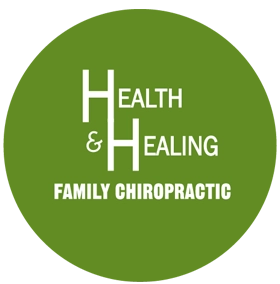How SoftWave Therapy Can Improve Your Quality Of Life in Andover MN
How SoftWave Therapy Can Improve Your Quality Of Life in Andover MN

In today’s fast-paced world, maintaining a high quality of life often means managing chronic pain, recovering from injuries, or simply finding safe and effective ways to promote healing. SoftWave Therapy is a non-invasive treatment that is rapidly gaining attention for its ability to do just that. Whether you’re recovering from surgery, dealing with persistent joint pain, or seeking relief from inflammation, this advanced technology offers a solution that doesn’t involve drugs or surgery. Contact our Andover MN chiropractic clinic today to learn more.
SoftWave Therapy uses acoustic waves to stimulate the body’s natural healing processes. It’s a clinically proven treatment method that has been used in physical therapy, sports medicine, and rehabilitation centers around the world. By targeting damaged tissue and enhancing blood flow, it encourages regeneration and reduces pain—helping patients return to their everyday lives faster and with fewer complications.
For those looking to enhance mobility, reduce discomfort, or simply improve their overall well-being, understanding how SoftWave Therapy works and what it can offer is a valuable step toward better health.
What Is SoftWave Therapy and How Does It Work?
SoftWave Therapy is an advanced, non-invasive treatment that uses patented unfocused acoustic wave technology to promote healing at the cellular level. Unlike more aggressive surgical procedures or pharmaceutical interventions, SoftWave Therapy stimulates the body’s natural regenerative processes without causing tissue damage.
At its core, the therapy involves a device that emits high-energy acoustic waves. These waves penetrate deep into muscles, tendons, and other tissues, where they trigger biological responses that promote healing. Specifically, SoftWave Therapy increases blood flow to the affected area, stimulates the release of growth factors, and activates stem cells—all of which contribute to tissue regeneration and pain reduction.
One of the most unique aspects of SoftWave Therapy is that it is “unfocused,” meaning the waves spread broadly over a treatment area rather than targeting a pinpoint location. This helps stimulate a larger area of tissue and makes the therapy suitable for conditions that affect diffuse or hard-to-reach areas.
Many patients find the procedure comfortable, with little to no downtime required afterward. Most sessions last around 10–15 minutes, and results can sometimes be felt after the very first treatment. The process is safe, FDA-cleared, and has been used worldwide in clinical settings with impressive success rates.
SoftWave Therapy is becoming a go-to option for individuals seeking effective, drug-free pain relief and faster healing—making it a powerful tool for improving your overall quality of life.
Key Conditions SoftWave Therapy Can Treat In Andover MN
SoftWave Therapy is a versatile treatment that has shown success across a broad range of medical and musculoskeletal conditions. Because of its ability to stimulate healing and reduce inflammation, it is commonly used in both orthopedic and neurological applications.
Here are some of the most common conditions where SoftWave Therapy can make a meaningful impact:
- Chronic Joint Pain: Particularly in the knees, shoulders, elbows, and hips, where wear and tear or repetitive use can cause long-term discomfort.
- Tendonitis and Tendinopathy: Conditions like Achilles tendonitis, rotator cuff injuries, and tennis elbow respond well to acoustic wave stimulation.
- Plantar Fasciitis: A leading cause of heel pain, this condition often sees significant improvement through increased blood flow and cellular repair.
- Sports Injuries: Strains, sprains, and overuse injuries benefit from the enhanced healing and reduced recovery time SoftWave Therapy offers.
- Peripheral Neuropathy: Nerve damage or dysfunction, particularly in diabetic patients, may see symptom relief through improved circulation and tissue regeneration.
- Post-Surgical Recovery: Patients recovering from orthopedic procedures often use SoftWave Therapy to accelerate healing and reduce scar tissue formation.
This therapy offers a promising option for those who have not found relief through traditional treatments or are looking to avoid invasive procedures.
Benefits of SoftWave Therapy for Chronic Pain Sufferers
Chronic pain is a debilitating condition that affects millions of people worldwide. Whether it stems from injury, degenerative conditions, or unknown causes, the ongoing discomfort can significantly reduce a person’s quality of life. SoftWave Therapy provides a breakthrough approach for those seeking long-term relief without relying on medication or surgery.
One of the key benefits is its ability to address the root causes of pain, rather than simply masking symptoms. The acoustic waves target inflammation, improve circulation, and stimulate tissue repair, offering both immediate and lasting results. Unlike painkillers, which carry the risk of side effects or dependency, SoftWave Therapy supports natural healing and functional restoration.
Another important benefit is the reduction in downtime. Traditional treatments for chronic pain, such as surgery or long-term physical therapy, often require extended recovery periods. In contrast, SoftWave sessions are quick and non-disruptive, allowing patients to return to their daily routines without interruption.
The therapy also complements other wellness strategies. Patients undergoing chiropractic care, physical therapy, or regenerative medicine treatments often use SoftWave Therapy to enhance overall outcomes. Its flexibility and minimal risk make it suitable for a wide range of individuals, including older adults, athletes, and those with sensitive health profiles.
Ultimately, for chronic pain sufferers seeking an effective, drug-free path to recovery, SoftWave Therapy offers not just symptom relief but also the potential for a real improvement in daily function and comfort.
What to Expect During a SoftWave Therapy Session
If you're considering SoftWave Therapy for the first time, it's natural to wonder what the experience will be like. The good news is that this therapy is designed to be both comfortable and efficient, with minimal preparation or recovery required.
Here’s what a typical session involves:
- Consultation and Evaluation: Your provider will start by assessing your condition and identifying target areas for treatment. This step may include a physical exam or review of your medical history.
- Preparation of the Area: The area to be treated is usually cleaned, and a conductive gel is applied to help transmit the acoustic waves.
- Application of SoftWave Technology: The handheld device is placed over the skin and emits acoustic waves that penetrate deep into the tissue. The sensation can feel like mild pressure or tapping, and some patients report a tingling or warm sensation.
- Real-Time Feedback: Because SoftWave Therapy can reveal areas of cellular distress, your provider may adjust intensity or placement based on your feedback during the session.
- Duration and Frequency: Sessions typically last between 10 and 15 minutes. Many patients require multiple sessions, often spaced a few days apart, depending on the severity of the condition.
After the treatment, most individuals feel no discomfort and can resume normal activities immediately. Some may notice improvement after the first session, while others see results over several treatments.
SoftWave Therapy is fast, effective, and personalized—making it a low-stress option for those seeking relief and recovery.
SoftWave Therapy vs. Traditional Treatments
When it comes to managing pain and promoting healing, many people are faced with a choice between traditional treatments and emerging therapies like SoftWave. Understanding the differences can help individuals make informed decisions based on their personal health goals and preferences.
Traditional treatments often involve medications, physical therapy, injections, or even surgery. While these approaches can be effective, they may also come with risks such as side effects, long recovery times, or limited long-term results. Pain medications, for example, may only provide temporary relief and can carry the risk of dependency or gastrointestinal issues.
In contrast, SoftWave Therapy offers a non-invasive and drug-free alternative. It doesn’t just block pain signals—it stimulates cellular healing and tissue regeneration. This makes it particularly attractive for people who have tried traditional treatments without success or are looking to avoid more invasive procedures.
Another key difference is the speed of recovery. SoftWave Therapy has little to no downtime, which is a significant advantage for those who cannot afford extended recovery periods. It also requires fewer sessions compared to long-term physical therapy regimens.
From a preventive standpoint, SoftWave can even be used proactively to maintain joint health, improve mobility, and reduce inflammation—things traditional treatments typically don’t address unless a problem has already developed.
Overall, while traditional treatments have their place, SoftWave Therapy provides a powerful and modern alternative that aligns with today’s preference for safe, efficient, and holistic health care.
Is SoftWave Therapy Right for You?
Determining whether SoftWave Therapy is right for you depends on your health goals, current condition, and treatment history. Fortunately, this therapy is designed to be highly adaptable and suitable for a wide range of individuals.
SoftWave Therapy is ideal for people experiencing chronic pain, soft tissue injuries, joint issues, or post-surgical recovery challenges. If you’ve already tried medications, physical therapy, or injections with limited results, this treatment may offer a new path to relief. It’s especially useful for those who are not candidates for surgery or wish to avoid the risks and recovery associated with invasive procedures.
Another factor to consider is your overall lifestyle and activity level. Athletes and active individuals often use SoftWave Therapy to speed up recovery and prevent injuries, while older adults benefit from improved mobility and reduced joint pain. Because the treatment is non-invasive and free from medication-related side effects, it appeals to people seeking a more natural approach to healing.
Before beginning therapy, a qualified provider will assess your condition and determine if SoftWave is a good fit for your needs. In most cases, there are no significant contraindications, but it’s important to discuss your medical history, including any implants, blood clotting issues, or pregnancy concerns.
If you're looking for a safe, proven method to enhance your recovery and reduce discomfort, SoftWave Therapy could be the solution you’ve been searching for.
Ready to experience the healing power of SoftWave Therapy firsthand? Visit Symmetry Chiropractic & Acupuncture in Naperville, Illinois, where Dr. Timothy Erickson provides expert, patient-centered care using the latest in non-invasive therapy techniques. Whether you're struggling with chronic pain, recovering from injury, or seeking to enhance your everyday wellness, SoftWave Therapy could be the breakthrough solution you need.
Contact Symmetry Chiropractic & Acupuncture today to schedule your consultation and begin your path to lasting relief and improved quality of life.
Monday
9:00am - 12:00pm
3:00pm - 6:00pm
Tuesday
3:00pm - 6:00pm
Wednesday
9:00am - 12:00pm
3:00pm - 6:00pm
Thursday
9:00am - 12:00pm
3:00pm - 6:00pm
Friday
9:00am - 12:00pm
Saturday & Sunday
Closed
Monday
9:00am - 7:30pm
Tuesday
6:15pm - 7:30pm
Wednesday
8:00am - 6:00pm
Thursday
8:00am - 2:30pm
6:15pm - 7:30pm
Friday
8:00am - 1:20pm
Saturday & Sunday
Closed
Health & Healing Family Chiropractic
2705 Bunker Lake Blvd NW #100
Andover, MN 55304
P: (763) 323-0061
F: (763) 754-9756


